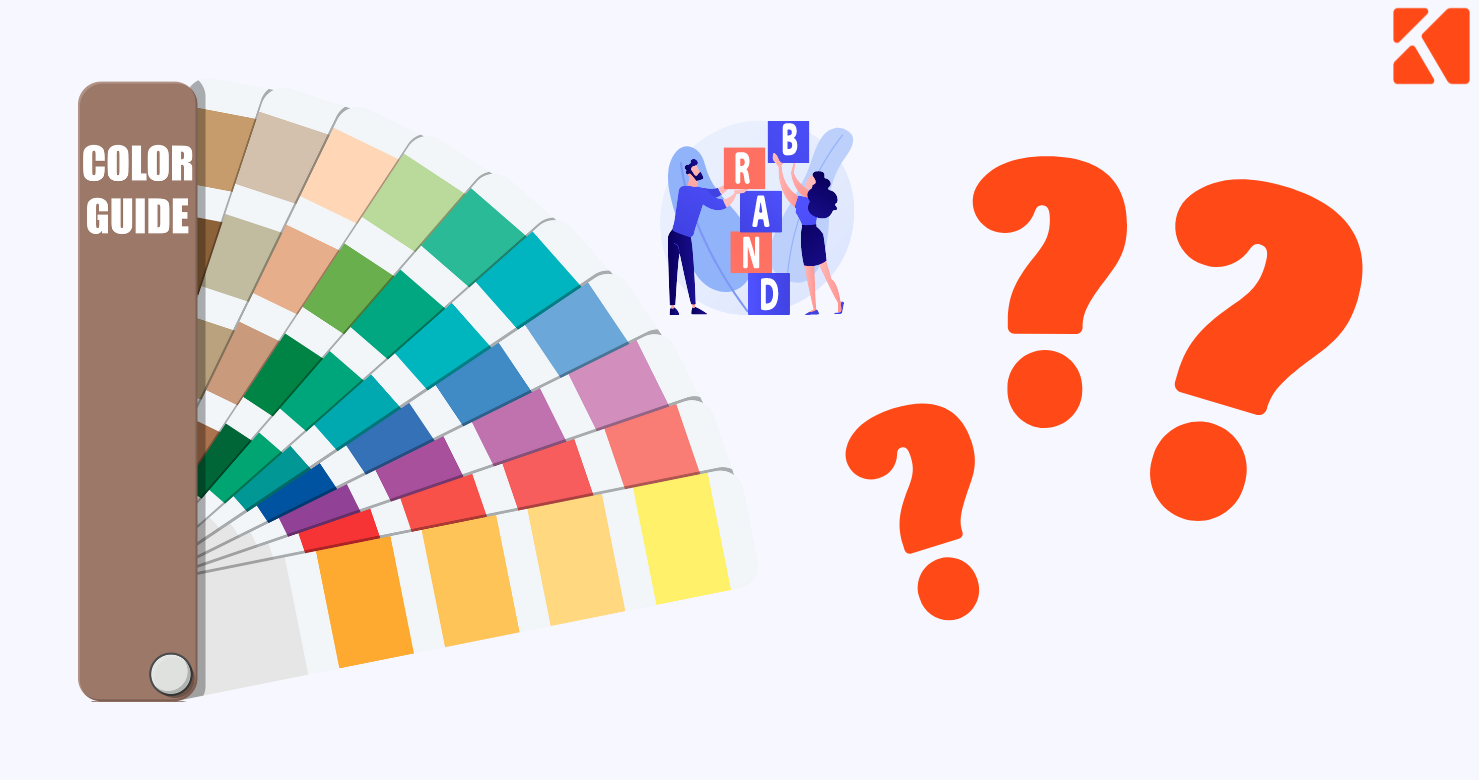
In the current competitive business environment, it is of utmost importance to establish a robust and easily identifiable brand identity. A brand guide serves as a valuable tool that defines and maintains consistency across all aspects of your brand's visual identity and messaging. It plays a crucial role in shaping the perception of your business and can greatly contribute to its long-term success. This article explores the significance of a brand guide and why it should be an essential component of your business strategy.
Introduction
When it comes to creating a successful business, building a powerful brand is paramount. A brand guide, also known as a brand style guide or brand manual, is a comprehensive document that outlines the guidelines and standards for representing your brand visually and verbally. It serves as a blueprint for maintaining a consistent brand image across various channels and touchpoints.
What is a brand guide?
A brand guide is a reference document that provides clear instructions on how to use and present your brand's visual elements, such as the logo, typography, color palette, and imagery. It also defines the tone of voice, messaging style, and overall brand personality. Essentially, a brand guide acts as a roadmap that ensures your brand is represented consistently and cohesively in all marketing and communication materials.
The importance of consistency
Establishing brand identity
Consistency plays a vital role in building a formidable brand identity. A brand guide helps define the visual and verbal elements that make up your brand, ensuring that they are consistently applied across all platforms. This consistency reinforces your brand's unique identity and helps it stand out in a crowded marketplace.
Building trust and recognition
Consistency breeds familiarity, and familiarity leads to trust. By maintaining a consistent brand image, you create a sense of reliability and professionalism. Customers who encounter your brand across different channels will recognize and trust it, making them more likely to choose your products or services over competitors.
Creating a cohesive brand image
To create a cohesive brand image, a brand guide addresses various aspects of your brand's visual identity and messaging.
Logo and visual elements
The logo is the face of your brand and serves as a visual representation of its values and personality. A brand guide provides guidelines on logo usage, including size, placement, clear space, and any variations allowed. It ensures that your logo is presented consistently and retains its integrity across different mediums.
Additionally, the brand guide outlines other visual elements such as icons, graphics, and imagery. These elements should align with your brand's identity and reinforce its desired perception.
Typography and color palette
Typography plays a significant role in conveying your brand's tone and personality. The brand guide specifies the fonts and their respective usage, including headings, body text, and other design elements. Consistent typography enhances brand recognition and maintains a cohesive visual identity.
Similarly, the brand guide defines a color palette that reflects
the brand's personality and evokes specific emotions. It includes primary and secondary colors, as well as guidelines for their usage in different contexts. Consistent color usage reinforces brand recognition and strengthens the overall brand image.

Tone of voice and messaging
The way you communicate with your audience plays a vital role in shaping their perception of your brand. A brand guide establishes guidelines for the tone of voice and messaging style to ensure consistency in all written and verbal communications. It outlines the language, style, and key messaging points that reflect your brand's values and resonate with your target audience.
Enhancing brand recognition
Consistency in branding across various platforms is crucial for enhancing brand recognition and recall. A brand guide ensures that your brand is visually and verbally consistent across your website, social media profiles, marketing collateral, and other touchpoints.
Consistent branding across platforms
Whether it's your website, social media channels, or offline marketing materials, maintaining a consistent brand identity helps reinforce your brand image. A brand guide provides guidelines on how to use your logo, colors, typography, and other visual elements consistently across different platforms, ensuring a cohesive and recognizable brand presence.
Unified customer experience
A consistent brand experience is essential for building trust and loyalty with your customers. A brand guide helps align the customer experience by providing guidelines on how your brand should interact with customers at various touchpoints. From customer service interactions to packaging and product design, a consistent experience strengthens brand perception and fosters customer loyalty.
Streamlining communication and collaboration
A brand guide not only benefits external communications but also streamlines internal communication and collaboration within your organization.
Internal alignment
A brand guide serves as a reference point for employees, ensuring that everyone is aligned with the brand's visual and verbal identity. It helps maintain a cohesive brand voice across departments and ensures that all team members understand and represent the brand consistently.
External partnerships
When collaborating with external partners, such as agencies, designers, or vendors, a brand guide provides clear guidelines on how to represent your brand. This ensures that your brand's identity and messaging remain intact, regardless of who is creating or distributing content on your behalf.
Increasing customer loyalty and engagement
A strong and consistent brand presence fosters customer loyalty and engagement, leading to long-term business success.
Emotional connection with the brand
Consistency in branding helps establish an emotional connection with your target audience. When customers consistently encounter your brand across different platforms, it builds familiarity and trust, making them more likely to develop a genuine connection with your brand and become loyal advocates.
Creating brand advocates
Consistency in brand representation encourages customers to become brand advocates. When customers identify strongly with your brand and its values, they are more likely to share their positive experiences and recommend your products or services to others. A brand guide helps create a consistent and memorable brand experience that encourages advocacy.
Protecting brand integrity
A brand guide serves as a safeguard for protecting your brand's integrity and reputation.
Brand guidelines for third-party collaborations
When partnering with influencers, sponsors, or affiliates, it's essential to ensure that your brand's identity remains intact. A brand guide provides specific guidelines for these collaborations, ensuring that the messaging, visual elements, and overall brand representation align with your established brand identity.
Avoiding brand dilution
Without clear guidelines, a brand's identity can become diluted over time. Different interpretations and inconsistent use of brand elements can weaken brand recognition and confuse your audience. A brand guide helps prevent brand dilution by providing specific instructions on how to use and represent your brand consistently.
Conclusion
In today's competitive business landscape, a strong and recognizable brand is vital for success. A brand guide acts as a compass that ensures consistency in your brand's visual identity and messaging, which plays a crucial role in shaping the perception of your business. By establishing clear guidelines for the use of visual elements, typography, color palette, tone of voice, and messaging, a brand guide helps create a cohesive and consistent brand image across all platforms and touchpoints.

Consistency is key in building trust, recognition, and loyalty among your target audience. When customers encounter a consistent brand experience, it reinforces their perception of your brand as reliable, professional, and trustworthy. Consistent branding also enhances brand recognition, making it easier for customers to identify and remember your business amidst a sea of competitors.
Moreover, a brand guide streamlines communication and collaboration within your organization. It serves as a reference document that ensures all employees understand and adhere to the brand's visual and verbal identity. This alignment fosters a cohesive brand voice and consistent representation across departments, enhancing internal collaboration and external partnerships.
A strong and consistent brand presence not only builds trust and loyalty but also creates an emotional connection with your target audience. When customers consistently experience your brand's identity and messaging, it resonates with them on a deeper level. This emotional connection fosters brand loyalty and advocacy, as satisfied customers become enthusiastic brand ambassadors who share their positive experiences with others.
Additionally, a brand guide plays a vital role in protecting your brand's integrity. It provides clear guidelines for third-party collaborations, ensuring that your brand's identity and messaging remain intact even when working with influencers, sponsors, or affiliates. By avoiding brand dilution and maintaining consistency, you safeguard your brand's reputation and ensure a strong and recognizable brand presence.
In conclusion, a brand guide is a crucial tool for businesses aiming to achieve long-term success. It establishes consistency in visual identity, tone of voice, and messaging, creating a cohesive brand image that builds trust, recognition, and customer loyalty. By streamlining communication, enhancing brand recognition, and protecting brand integrity, a brand guide sets the foundation for business growth and establishes a strong foothold in the market.
FAQs (Frequently Asked Questions)